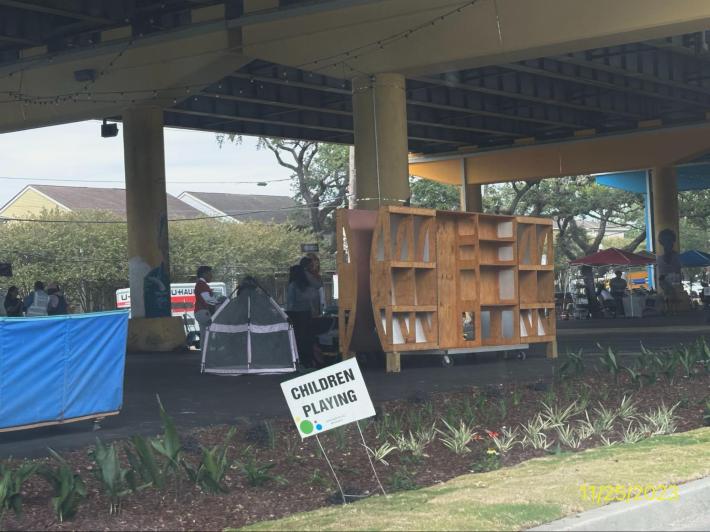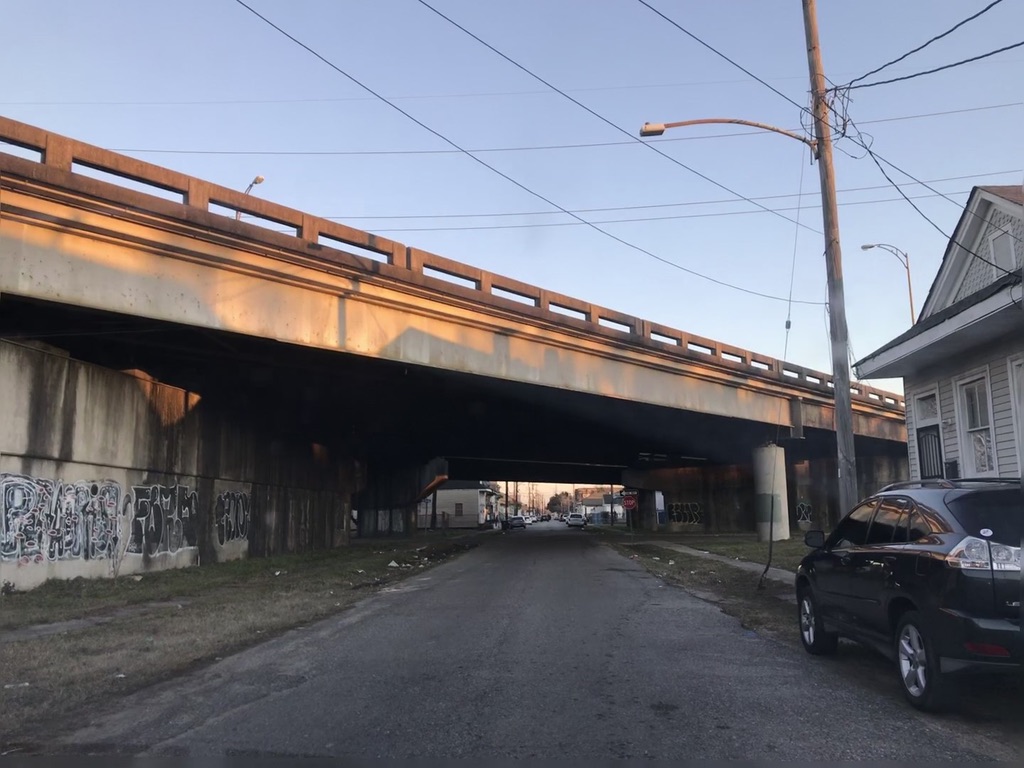Editor's note: this article is an excerpt from the Vision Zero Cities Journal and is republished with permission. For more information on the Vision Zero Cities 2024 conference, click here.
Recently, I was asked how I remain steadfast in my fight against environmental racism.
I used to fear all that could go wrong. But over time, I’ve learned to trust even in uncertainty and to use focus and strategy to remain strong. This strength has inspired me to make bold moves, over and over again at all different levels. I learned the value of this strategy as soon as I entered the freeway-fighting world.
This problem began in 1966 with the destruction of 500 homes, hundreds of businesses and 400 oak trees along Claiborne Avenue in the Treme and 7th Ward neighborhoods of New Orleans. Since then, the once-bustling Black business corridor has been scarred by a dangerous highway overpass that spews constant air and noise pollution. Claiborne lights up as the citywide hotspot on the New Orleans Vision Zero dashboard. Standing up against this environmental injustice has required me to fight at municipal, state and federal levels.
As a third-generation Treme resident and advocate with a background in urban planning, I first waded into this fight by writing an op-ed that publicly challenged former New Orleans Mayor Mitch Landrieu's decision to build a marketplace under the Claiborne Expressway. The challenge, backed by research, helped put the discussion of community and infrastructure on the map.
My second bold move was an act of good trouble in the form of a tactical urbanism campaign. Architect and urban planner Doug Farr helped me conceive Paradise Lost | Paradise Found, a series of educational posters that fellow advocates and I plastered to the highway. They reflected Claiborne’s unjust history and future opportunities.
The art of Paradise Lost | Paradise Found was designed to communicate with a community that doesn’t normally sit at the decision-making table. Esthetically, it addressed planning and development issues in a manner that dramatically departed from the traditional presentation of idyllic renderings and technical drawings. It honored street art.

The visual communications and messaging strategy attracted enough media attention that it helped set the table for Claiborne to join mainstream discussions. President Biden identified the Claiborne Expressway as a divisive piece of infrastructure when he rolled out the infrastructure plan.
Even though many cities share the story of the destruction of Black, Brown and poor neighborhoods for the good of the suburban order, the truth is New Orleans is a city that tells its own story. Its history lines the streets. The indigenous New Orleans, Bulbancha, or place of many tongues, existed for 1,000 years before the New Orleans we know was claimed for the French in 1682. Enslaved Africans began shaping the deeply rooted ethnicity of the city in 1719. Vestiges of the French Code Noir can still be seen and felt during the Sunday drum circles in Congo Square.
In contrast to all of New Orleans’ inherent charm and beauty, the city’s legacy of injustice carries on today with political hostility and poor governance. The Louisiana Department of Transportation has announced that they will use the Biden administration’s Reconnecting Communities grant not to tear down the highway, but to cement its legacy by removing a few ramps and placing a festival market and community space underneath — all at the expense of the neighborhood’s health.
To make matters worse, the Department of Commerce gave the City of New Orleans $875,000 in seed money to support entrepreneurs who want to participate in the festival marketplace. Instead, the City used the funding to repave and decorate a parking lot under the highway. Vendors who want to sell at the events must pay to play. None of these development strategies honor the intent of the federal grant.

Research and data have been a cornerstone of my advocacy. The American Geophysical Union matched the Claiborne Avenue Alliance, our neighborhood advocacy group, with Dr. Adrienne Katner, an environmental scientist at LSU School of Public Health. We banded together to study the environmental effects of the highway. As fate would have it, Dr. Katner’s father was the city planning director when the highway was built; her mission was to redeem her father, who regretted bearing witness to the destruction of Treme and the 7th Ward. Data collected by LSU shows that the air quality near the Claiborne Expressway is poor. Their studies showed that exposure to particulate matter is highest within the first 600 feet of the highway, just two city blocks in New Orleans. High levels of exposure to particulate matter can lead to asthma and a host of other health problems.
The noise exposure is equally as damaging. Noise under the highway typically measures 80 decibels or more during off-peak travel times. During festivals, speakers blare at 90 to more than 100 decibels to drown out the drone of the highway. That level of noise is damaging to the performers and the audience.The Claiborne Avenue Alliance’s EPA study is designed to challenge the City and State’s proposed festival marketplace. We will compare public health data under three scenarios for the redevelopment of the expressway corridor that were first outlined in our Reconnecting Communities application.
So, how do you continue to fight in an environment that attempts to censure and disregard what you say? You keep talking! Advocacy can be a tough nut to crack and there may not be a playbook for what you’re aiming to do. Understand that your journey will be shaped by the environs of the place. Therefore, you must develop a strategy, commit to being fearless and educate yourself. Otherwise, you won’t be able to move.






